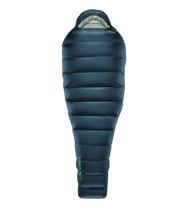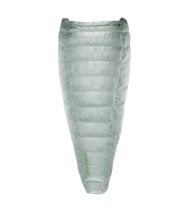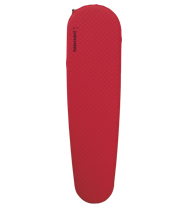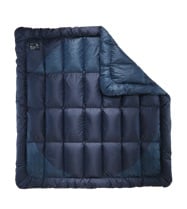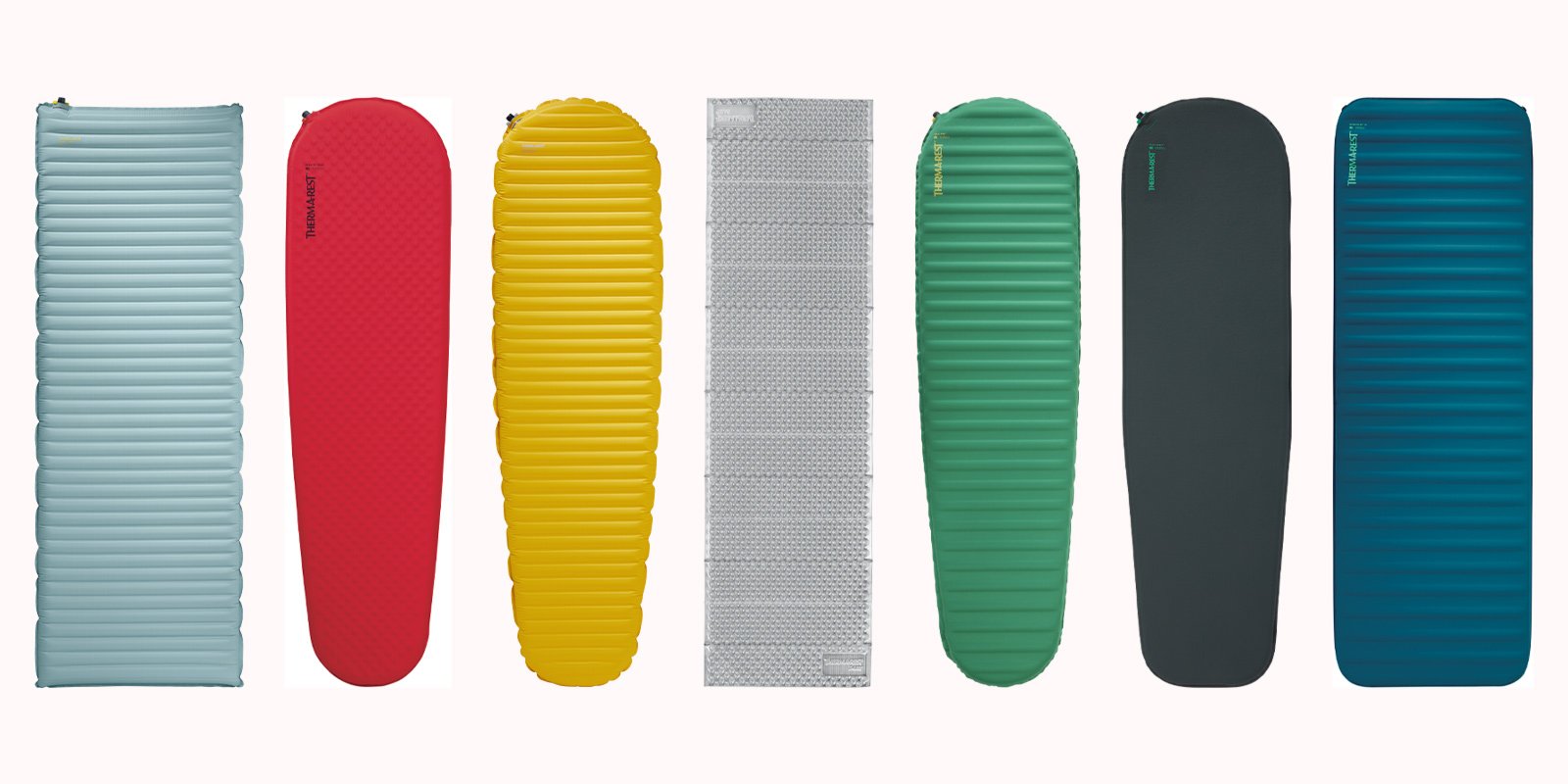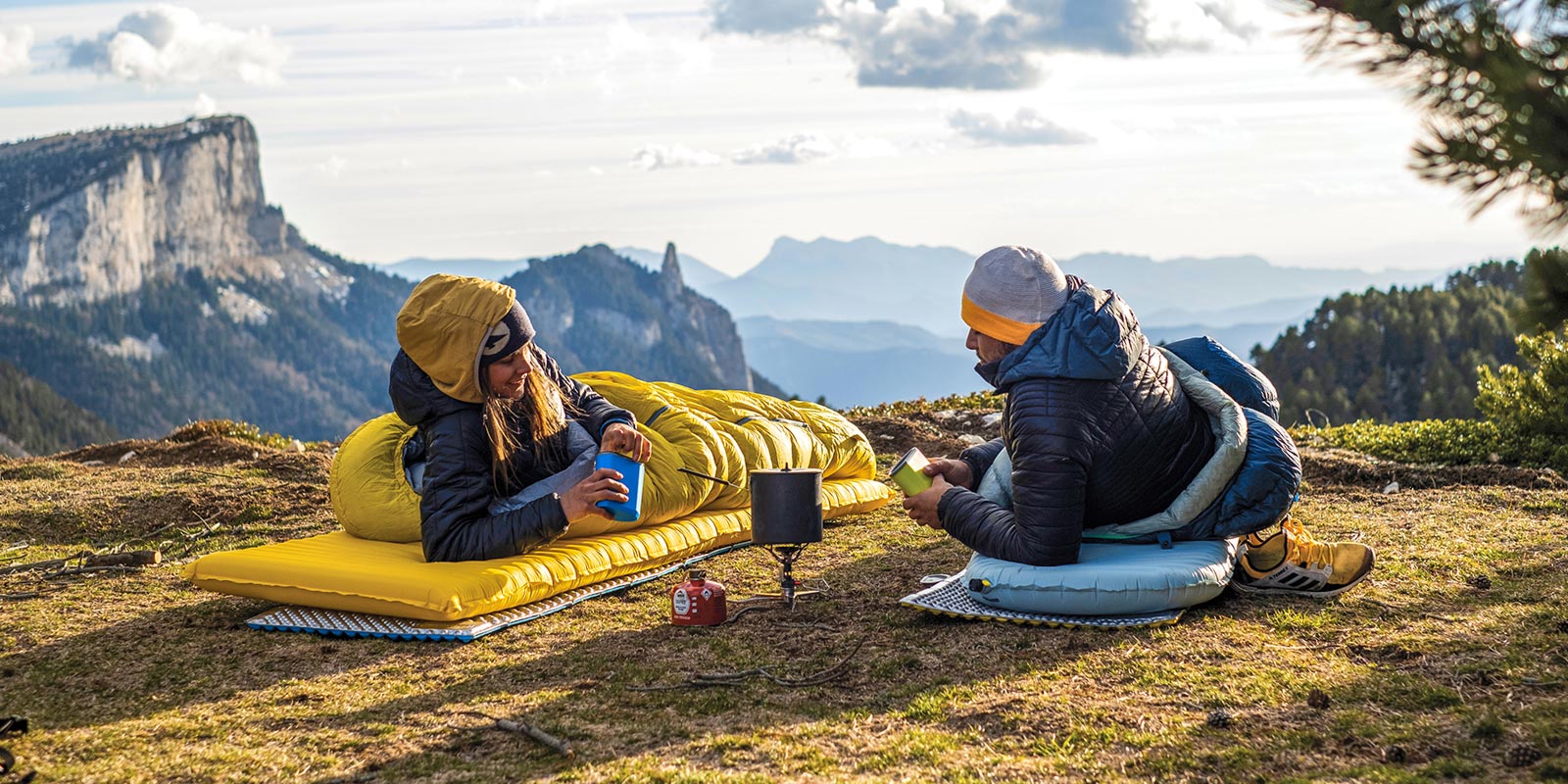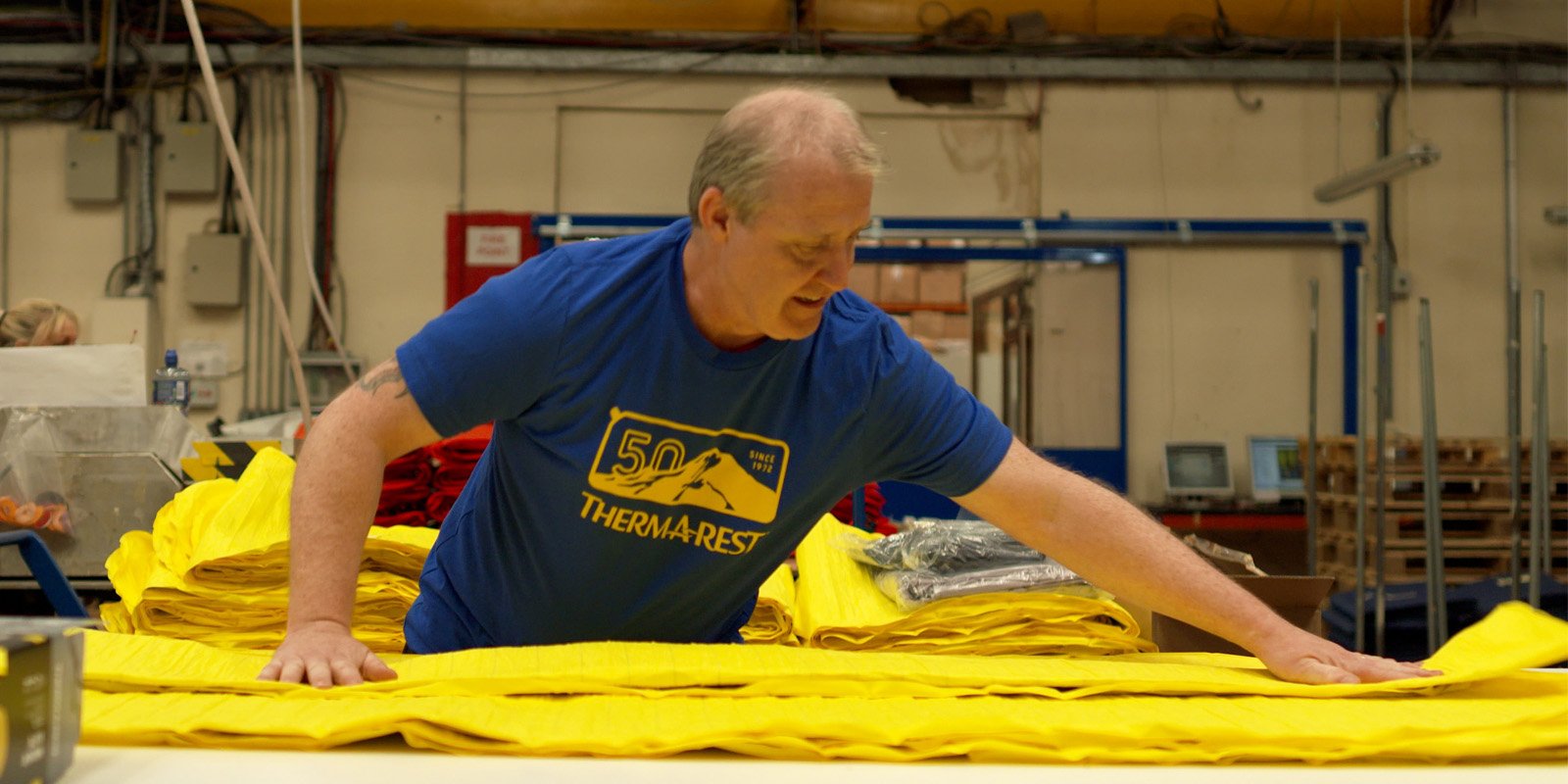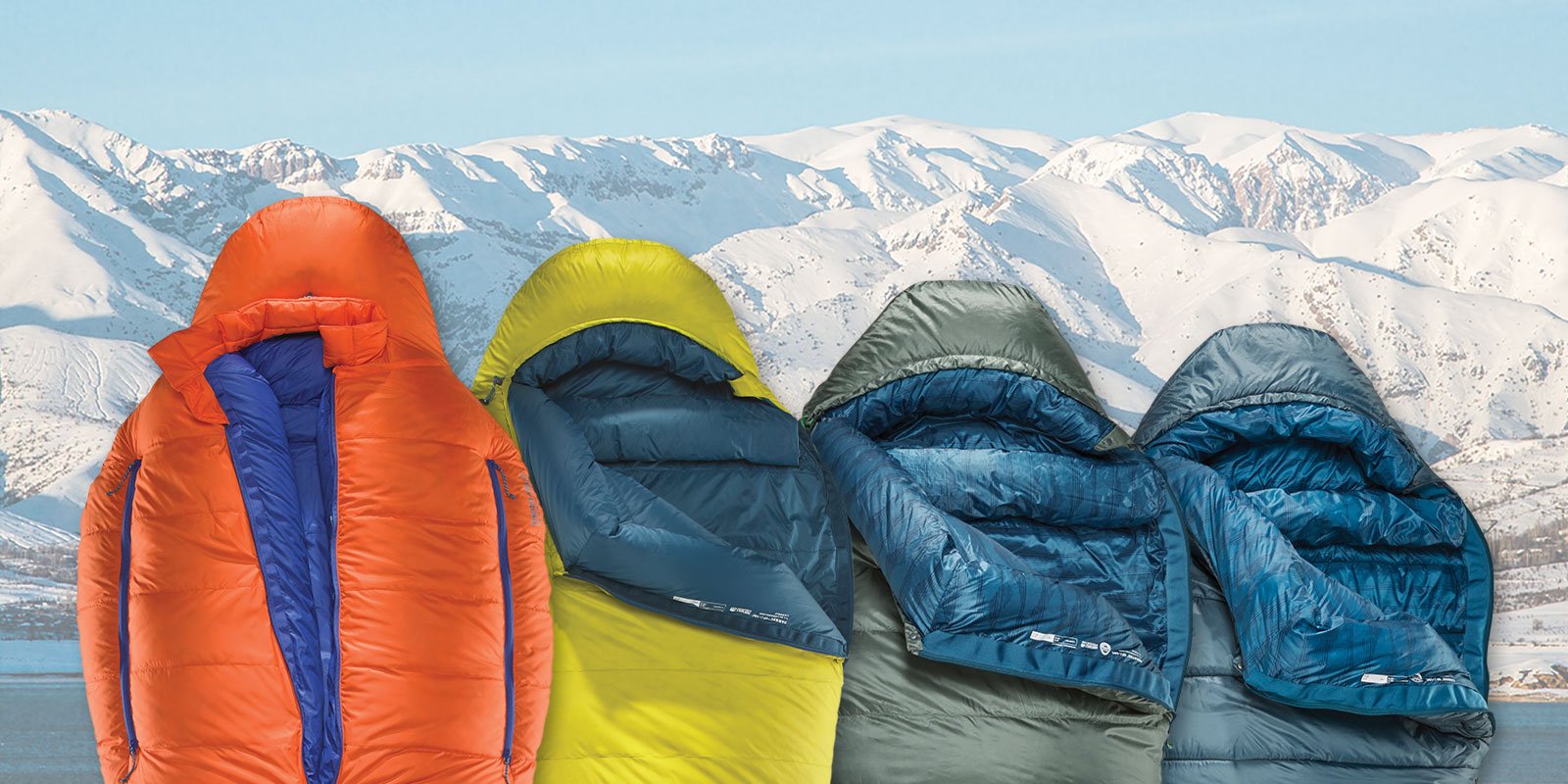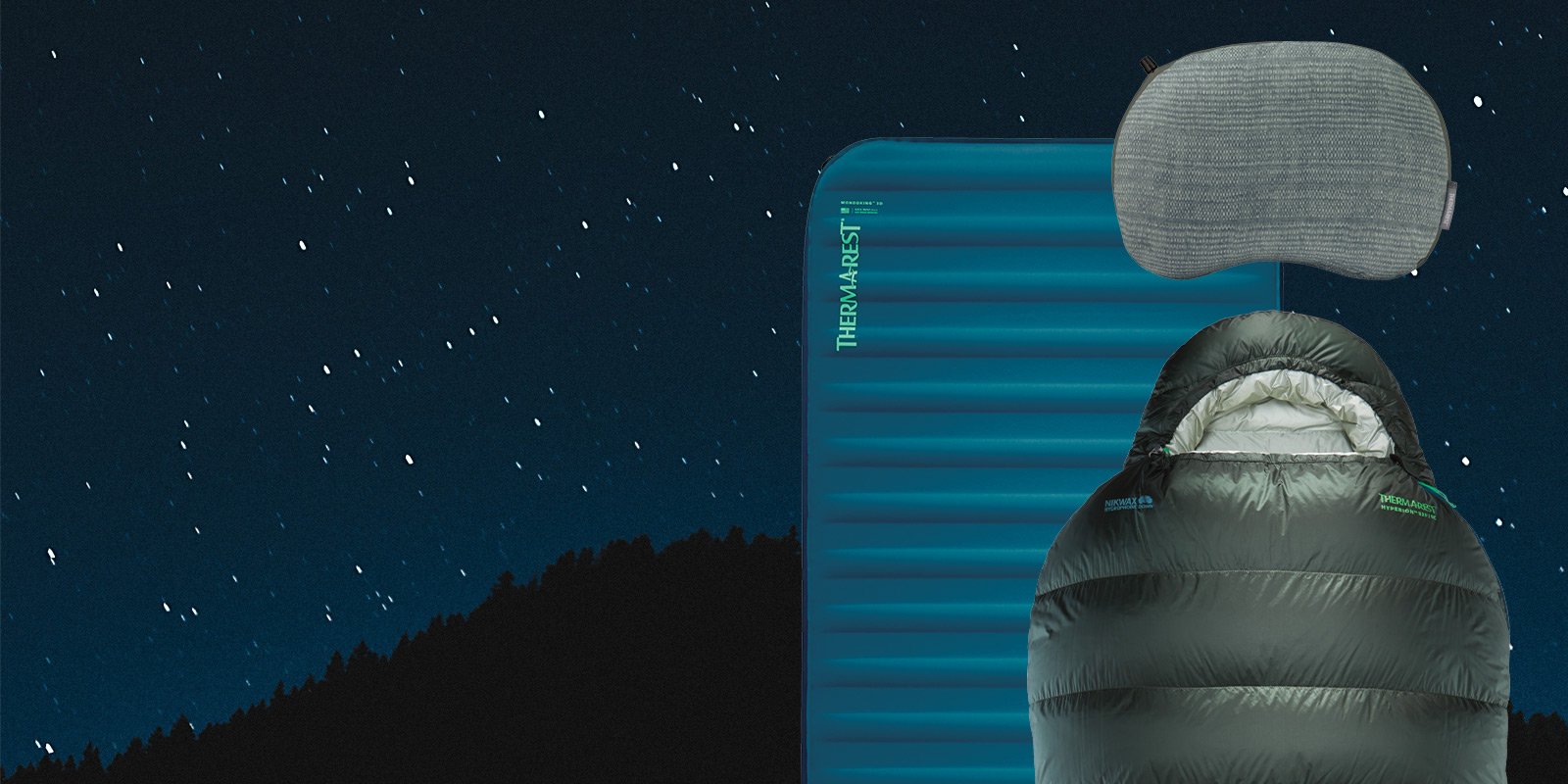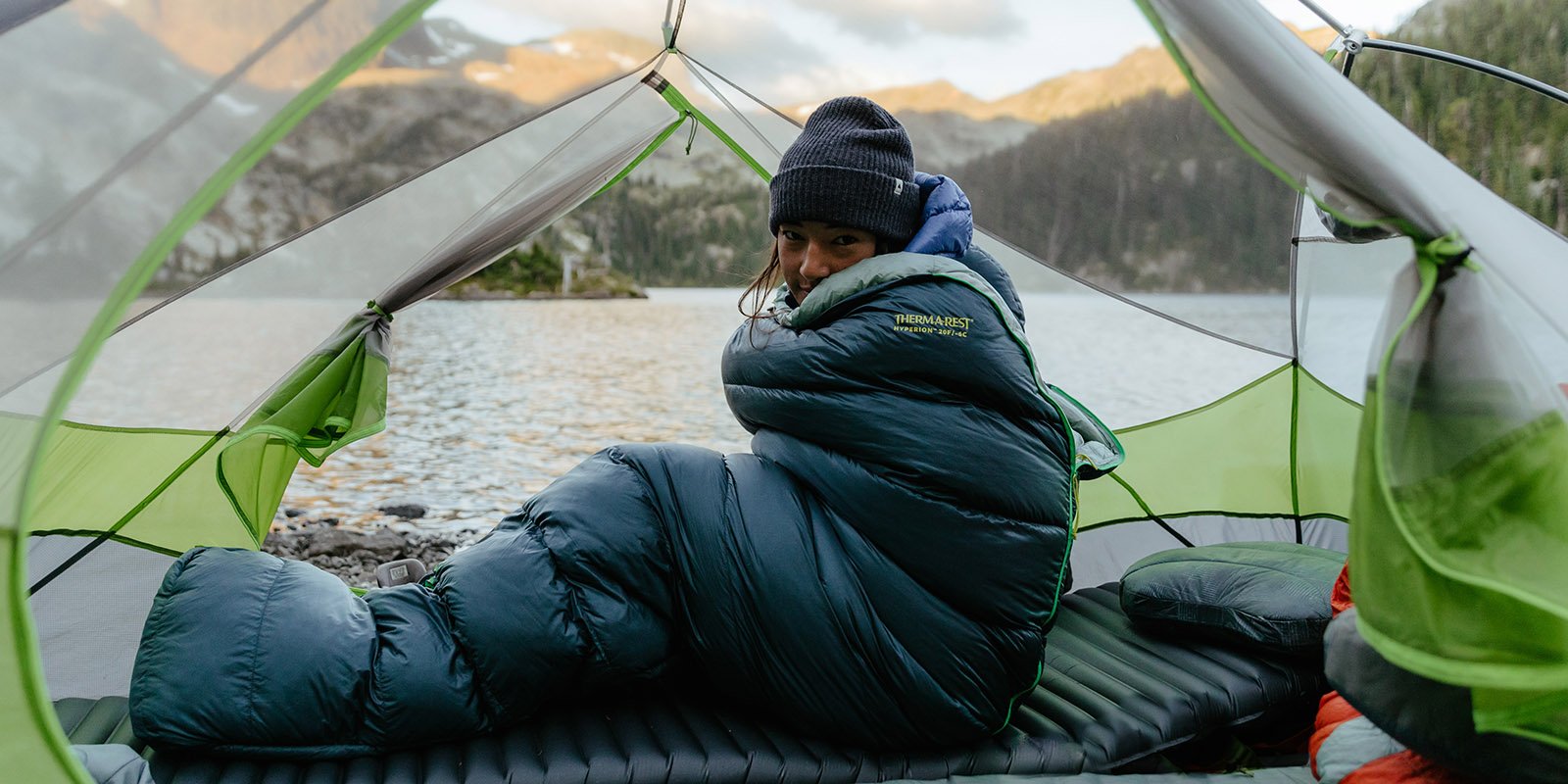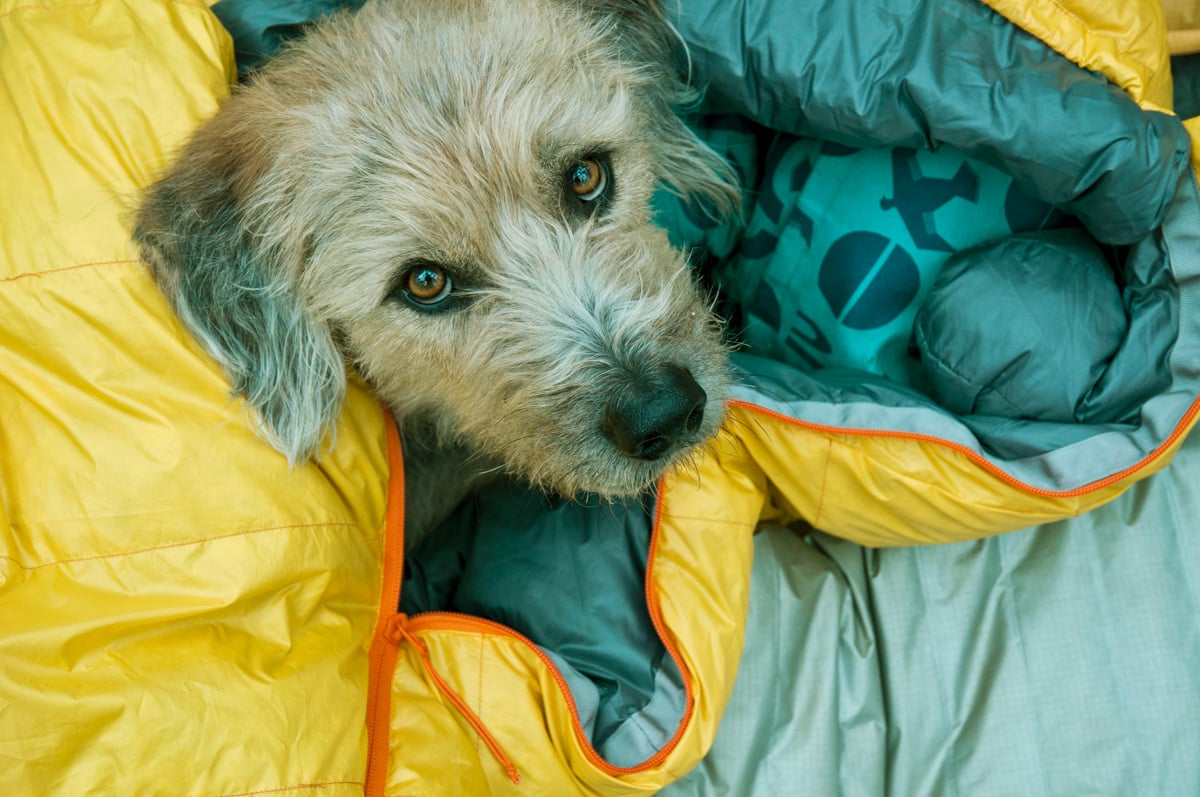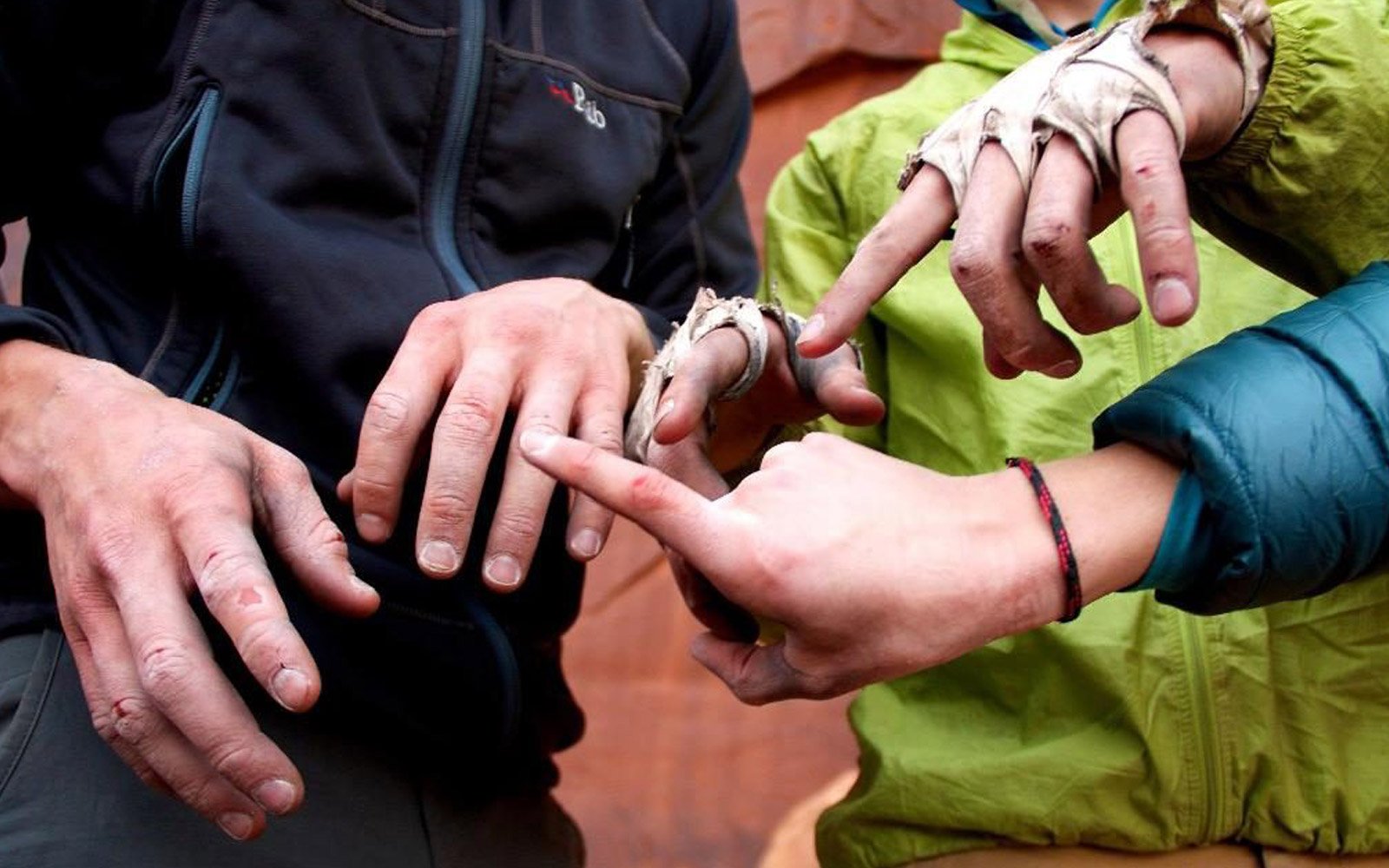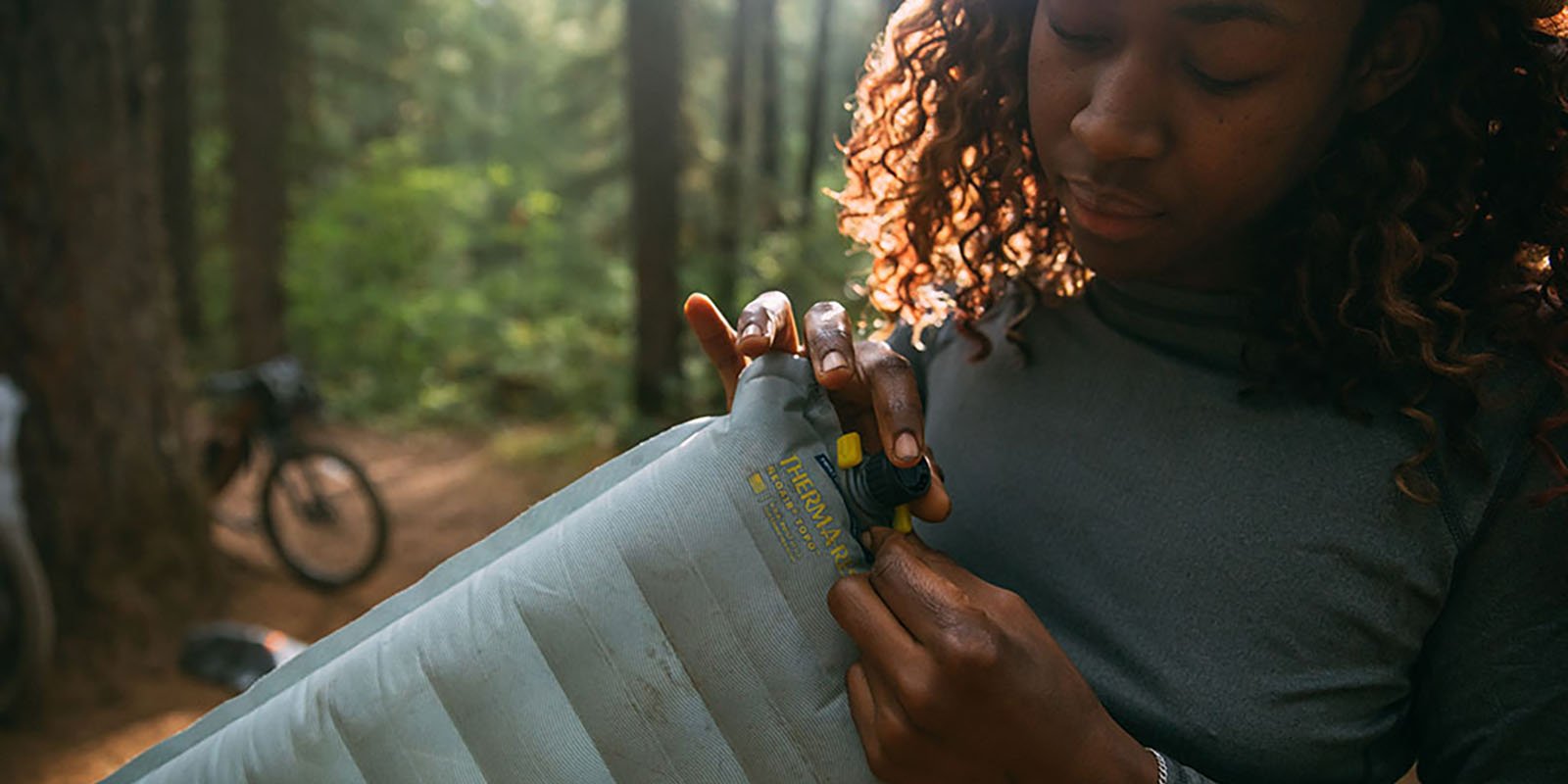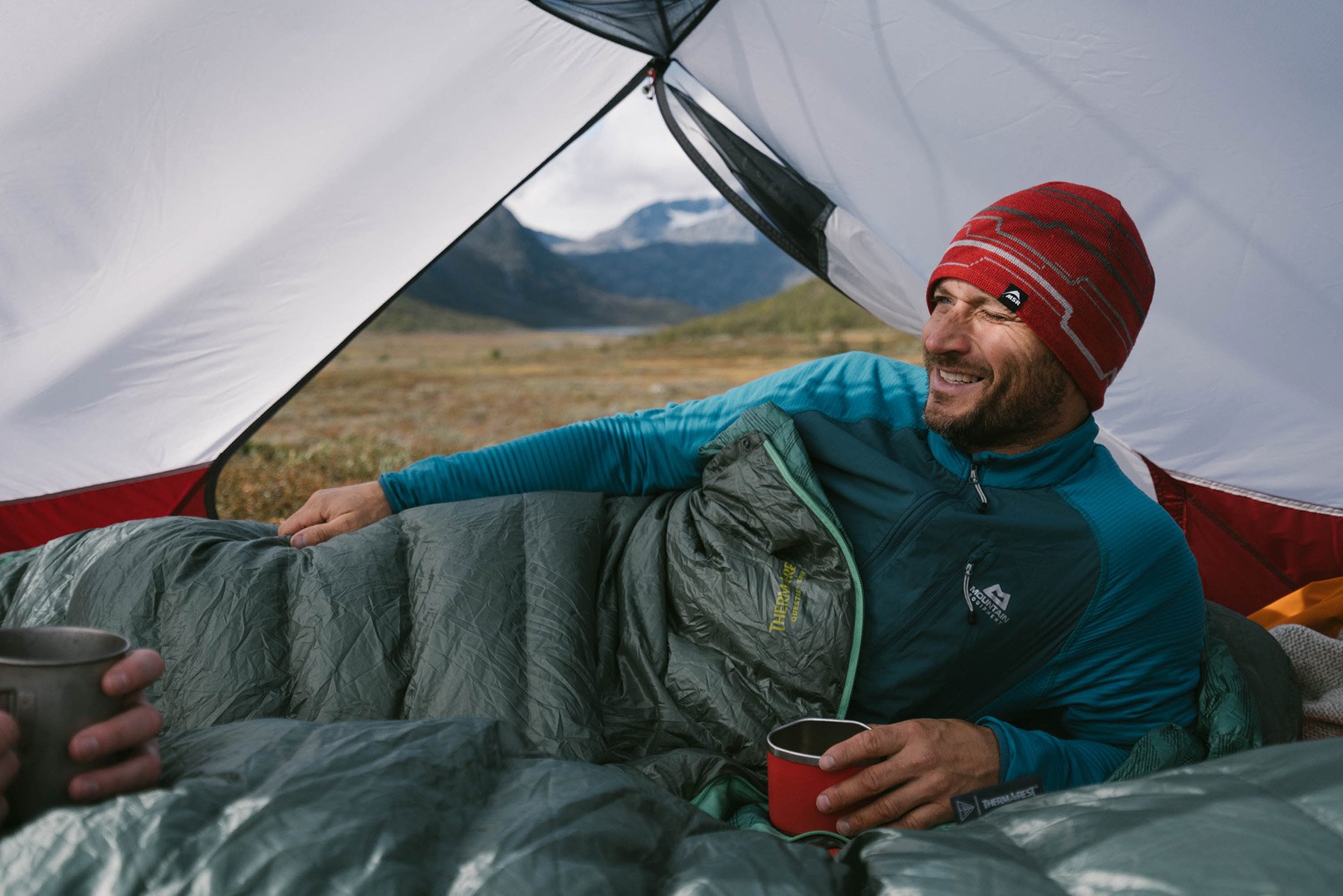Like it or not, winter is coming for a visit. As with any impending guest, a little preparation is in order. You need to make room for this cold-hearted traveler and all of the skis, boots, boards, sleds, ice axes, jackets, beanies, and other stuff they bring along. In other words, it’s time to store your summer sleeping pads and sleeping bags for the winter season. Here are a few tips on how to best store your gear for winter hibernation, assuring maximum performance for so many good seasons to-come.
How to Store Sleeping Pads
1. Clean It
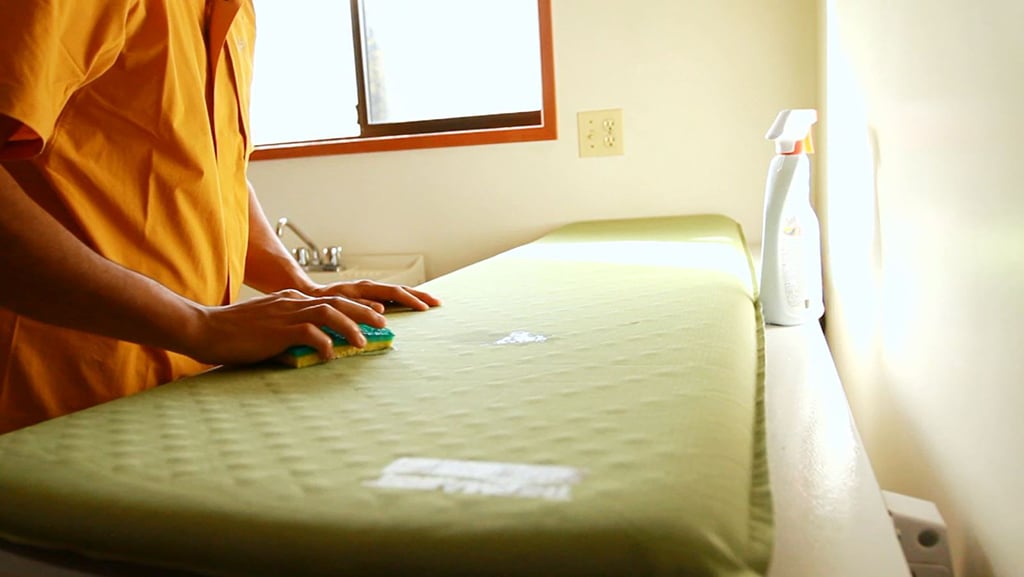
Cleaning your sleeping pad preserves its life expectancy. Dirt and body oils that accumulate in the textiles can contribute to your pad’s early degradation. Often times, pads that are neglected and dirty also start delaminating. Through research, we’ve discovered that the fatty acids in body oils make the film beneath the pads’ fabric gummy.
So how should you clean a sleeping pad? Simple 409 does the trick. As does soap and water. Or you can use a degreaser like biokleen® All-Purpose Cleaner. After spraying the mattress with a cleaning solution, wipe it down and then rinse thoroughly with water.
2. Fix It
Winter is the perfect time to make those repairs you haphazardly patched on the trail last summer. It’s easy to let it slide, but it sure is nice to have it ready to go.
If you’re having trouble repairing a mattress, or you’re just not into the whole DIY thing, send us the pad and we’ll fix it for a minimal fee. Visit the Therm-a-Rest warranty page to learn more about getting your sleeping pad repaired by our professional team.
3. Store It

For our foam self-inflating pads, proper storage is essential for future performance. Lying your mattress flat with the valve open is the way to go. If a foam pad is rolled tight and compressed with a valve closed for a long period of time it won’t be as responsive when you take it out next season. If you have an air mattress, simply roll it up tight and tuck it away for the winter.
Pro Tip: If you’re struggling to find room to store your full-size, self-inflating mattresses, here are a few suggestions.
- Behind the couch
- Under the bed
- Behind a bookshelf
- In the back of your closet
How to Store Sleeping Bags, Blankets & Quilts
For your summer-weight or three-season bags, blankets and quilts, wintertime means shelf time. But there are a few crucial steps to take before stowing your sleeping bags that will increase their durability and comfort.
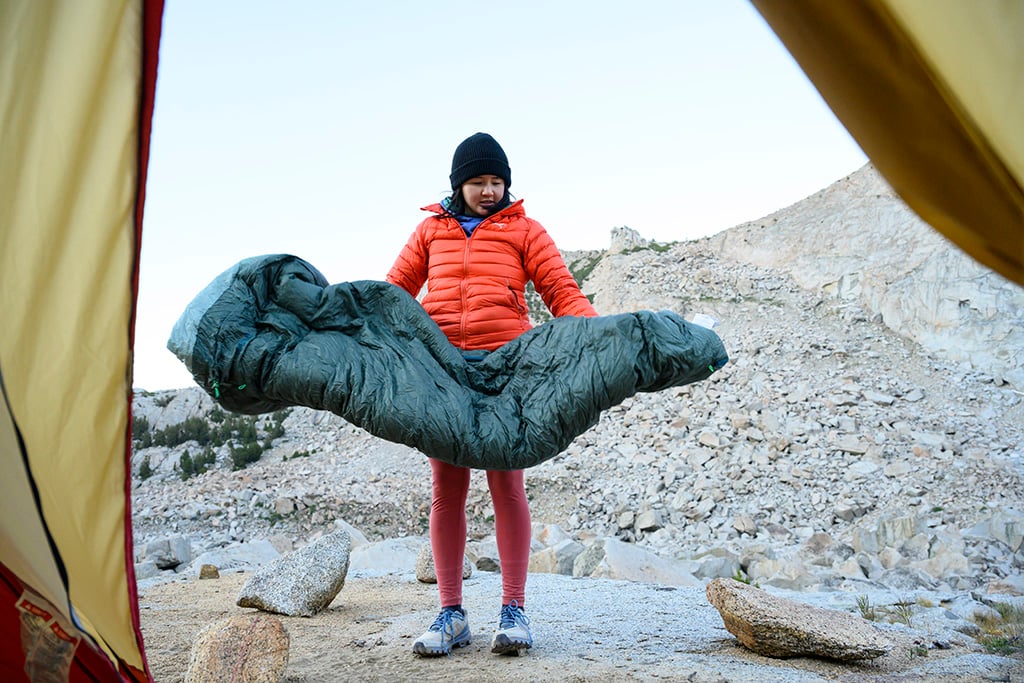
1. Wash It
Washing your sleeping bag is more important than just improving your personal hygiene—not to mention your relationships with any future tent mates. In fact, by washing a sleeping bag, you’re essentially restoring the sleep system’s warming capacity. Washing removes oils that get into the insulation and create clumps and thus cold spots. Down insulation is much more susceptible to this than synthetic insulation. To check for clumps hold your bag up to the sunlight. Dark spots are the insulation, whereas translucent areas are cold spots. Even distribution of insulation (minimal translucent areas) is optimal. Washing your sleeping bag helps significantly in evenly redistributing the insulation.
Before you toss your bag into just any washing machine, know this: a top-loading machine with an agitator can destroy your bag. Use a front-loading washing machine (found at most laundry mats), non-detergent soap and run an extra rinse and spin cycles. If finding a front-loader proves difficult, there’s always the old-fashioned hand-washing method.
If your bag is filled with Nikwax® Hydrophobic Down™ (used in all three and four-season Therm-a-Rest down sleeping bags), we recommend washing the bag with Nikwax Down Wash Direct™ to maintain the bag’s water-repellent qualities. Standard detergents will leave water attracting residues on your down. Down Wash will effectively clean the bag without destroying its Durable Water Repellent (DWR) coating. After several washes, however, you will need to restore the bag’s DWR coating using Nikwax Down Proof™.
Dry It
Low heat is crucial when drying your sleeping bag, otherwise, fabrics can melt. A large industrial dryer is recommended, and care must be taken so that the bag doesn’t expand and get stuck on the dryer’s heater. To do this, you can toss a few tennis balls in the dryer will keep the bag moving away from the heater, as well as break up down clusters.
2. Bag It
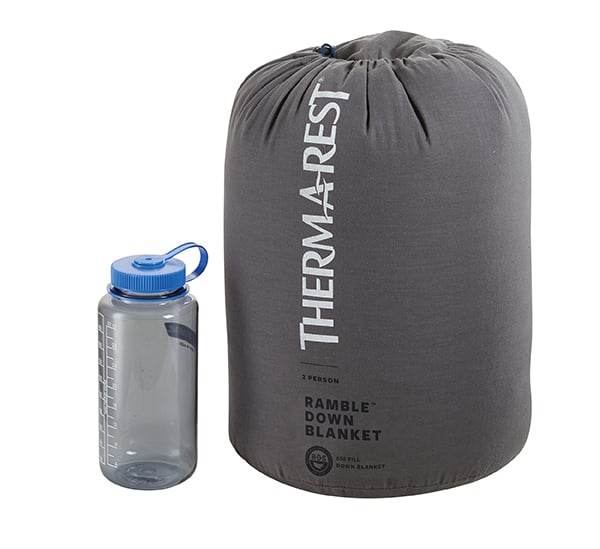
Therm-a-Rest sleeping bags come with two storing options, a compact stuff sack and a breathable mesh storage bag. We recommend using the storage bag over the winter because the mesh and larger size lets the bag breath and doesn’t compress its insulation. If you don’t have a large, breathable sack, we recommend hanging your bag, or simply leaving it unpacked (lightly folded will work). Again, the main concern is to not compress the bag’s insulation. Finally, make sure you stow the bag in an area that doesn’t experience warming/cooling cycles. If your garage gets really cold then really warm, those cycles may create moisture.
Pro Tip: We also recommend turning your bag inside out and letting it soak up some sun for a few hours after a thorough washing and drying. The sun kills a lot of stuff you don’t want in your bag.
Related Posts:
- How to Take Care of Sleeping Bags
- How To Wash a Sleeping Bag
- Backpacking Gear Care for Sleeping Pads & Bags
Updated. Originally published November 24, 2019.
